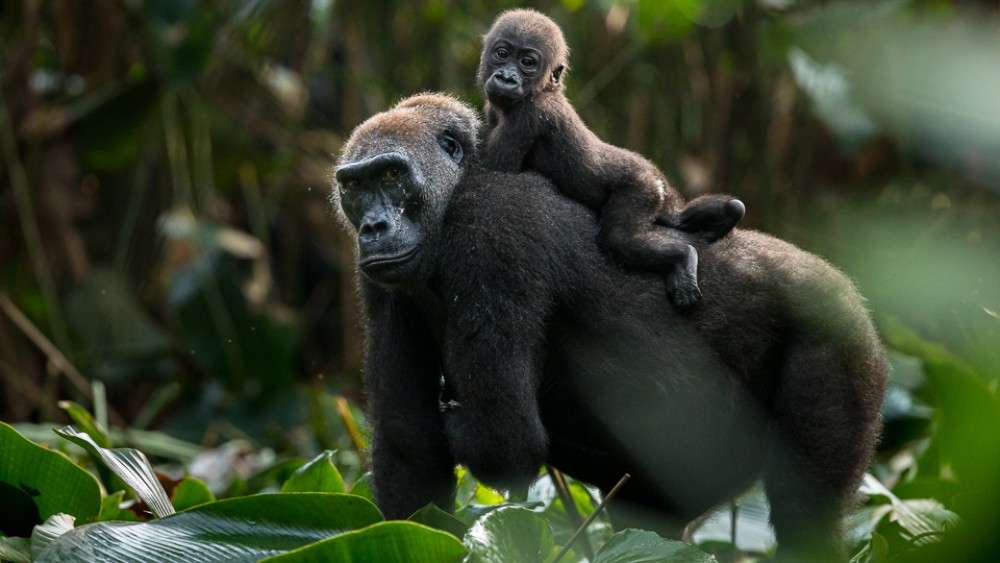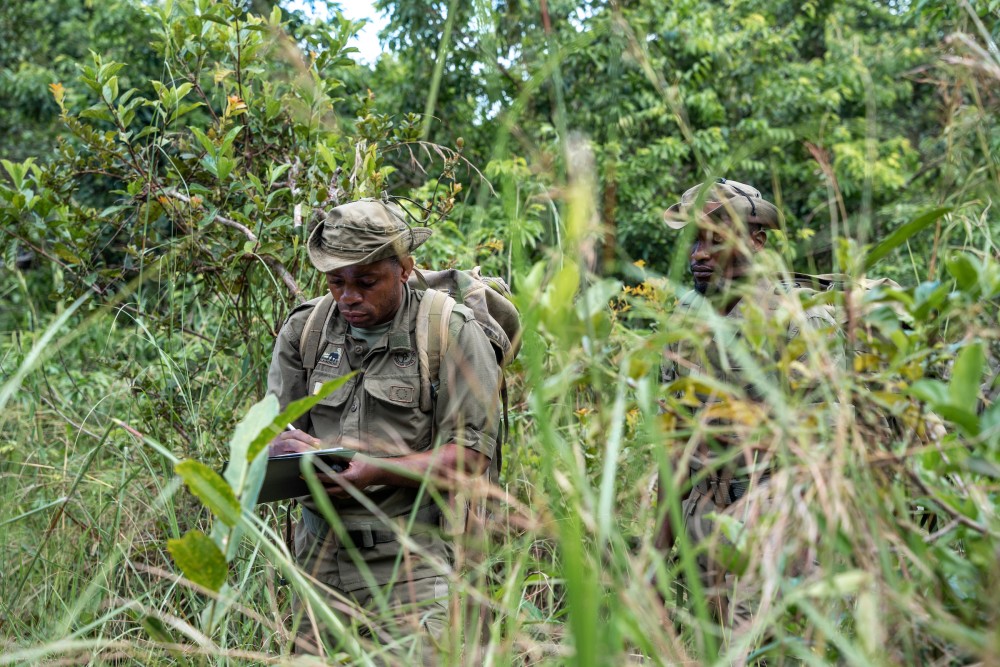Odzala-Kokoua National Park is one of Africa’s oldest national parks, designated in 1935 and receiving Biosphere Reserve status in 1977. It is one of the world’s largest remaining intact forest systems. Its biodiversity is nothing less than exceptional; with over 440 bird species, it was recognised as an Important Bird Area by Birdlife International. While it is best known for its western lowland gorilla and chimpanzee populations, there are an estimated 100 mammal species in the park, including buffalo, bongo and many other antelope species.
The region’s protected areas support the largest forest elephant population in Central Africa, but the species is under threat as a result of poaching pressure. Today, effective conservation law enforcement has resulted in stable populations making use of wildlife corridors across the region.
Gorilla numbers have been severely under threat, due to diseases such as Ebola, as well as the illegal wildlife trade for pets and bushmeat. With the increased park security and the addition of the Lossi Gorilla Sanctuary, this downward trend can be reversed.
 © Andrew Beck
© Andrew Beck
Monitoring and Surveys
Odzala’s triennial forest survey took place throughout 2022 and included the first systematic forest transect survey for the Lossi Gorilla Sanctuary since 2006. Camera traps are shedding light on the use of bais (natural clearings in the forest) by wildlife, which use these key landscape features as a source of minerals, including salt.
Quarterly aerial savannah surveys show promising wildlife numbers across the park. In 2022, habituation of a new nine-member gorilla group was initiated in the eastern sector of the park near Camp Imbalanga, the park’s ecotourism facility - studies of this group will contribute to research and tourism goals in the coming years. A total of 14 elephant have been collared to provide insights on wildlife corridors, which contributes to conservation law enforcement strategies, community engagement to reduce human-wildlife conflict and regional management objectives.
 © Irene Galera
© Irene GaleraConservation Law Enforcement
Despite their vast size, tropical forests are sensitive to disturbances within the ecosystem, and the demise of keystone species, such as forest elephant, can cause the decline of many others. Therefore, effective conservation law enforcement is essential in ensuring the fragile balance is kept.
While bushmeat poaching remains a constant threat, our highly trained ranger team, coupled with positive community engagement, has helped to curb illegal activity within the park. As a result, wildlife numbers are predominantly stable, with some populations increasing.
EarthRanger technology aggregates and displays data including vehicle movements, ranger team locations, movements of collared animals and illegal incidents, all of which helps the park to respond effectively to information received from teams in the field.
In addition to basic field ranger training, all rangers receive annual refresher training on human rights, patrol procedures, first aid and physical fitness. In addition, rangers received human rights training sessions held in collaboration with Congolese human rights NGO, Cercle des Droits de l'homme et du Développement (CDHD) in 2021 and 2022. CDHD also conduct regular monitoring sessions of the park’s community communication channels.
A focus area for the ranger teams is engaging with surrounding communities to ensure they have good knowledge and understanding of national wildlife laws and access to natural resources, as well as encouraging communities to engage with park management to report any challenges.
